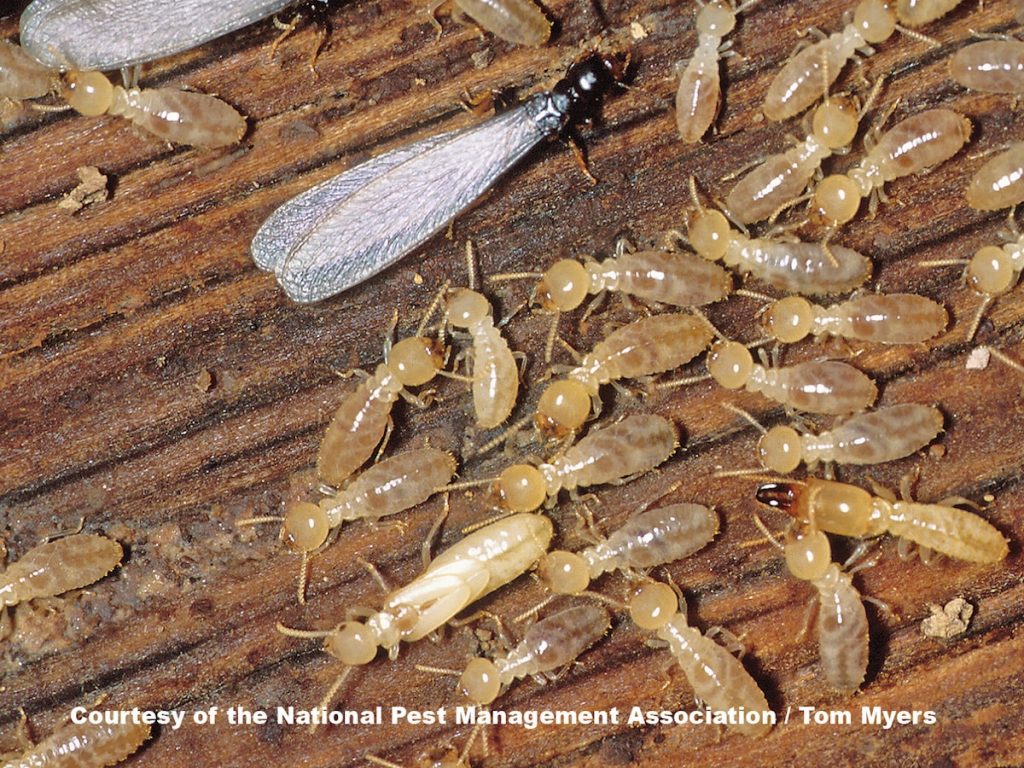Termites are one of the most destructive pests to invade homes in many areas across the world. They can cause extensive damage to the structure of a home and can be expensive to eradicate. Understanding why termites are invading your home, and how to protect it from further infestation, is essential for keeping your home safe and sound. In this article, we’ll discuss the causes of termite infestations and the steps homeowners can take to prevent them.
Types of Termites
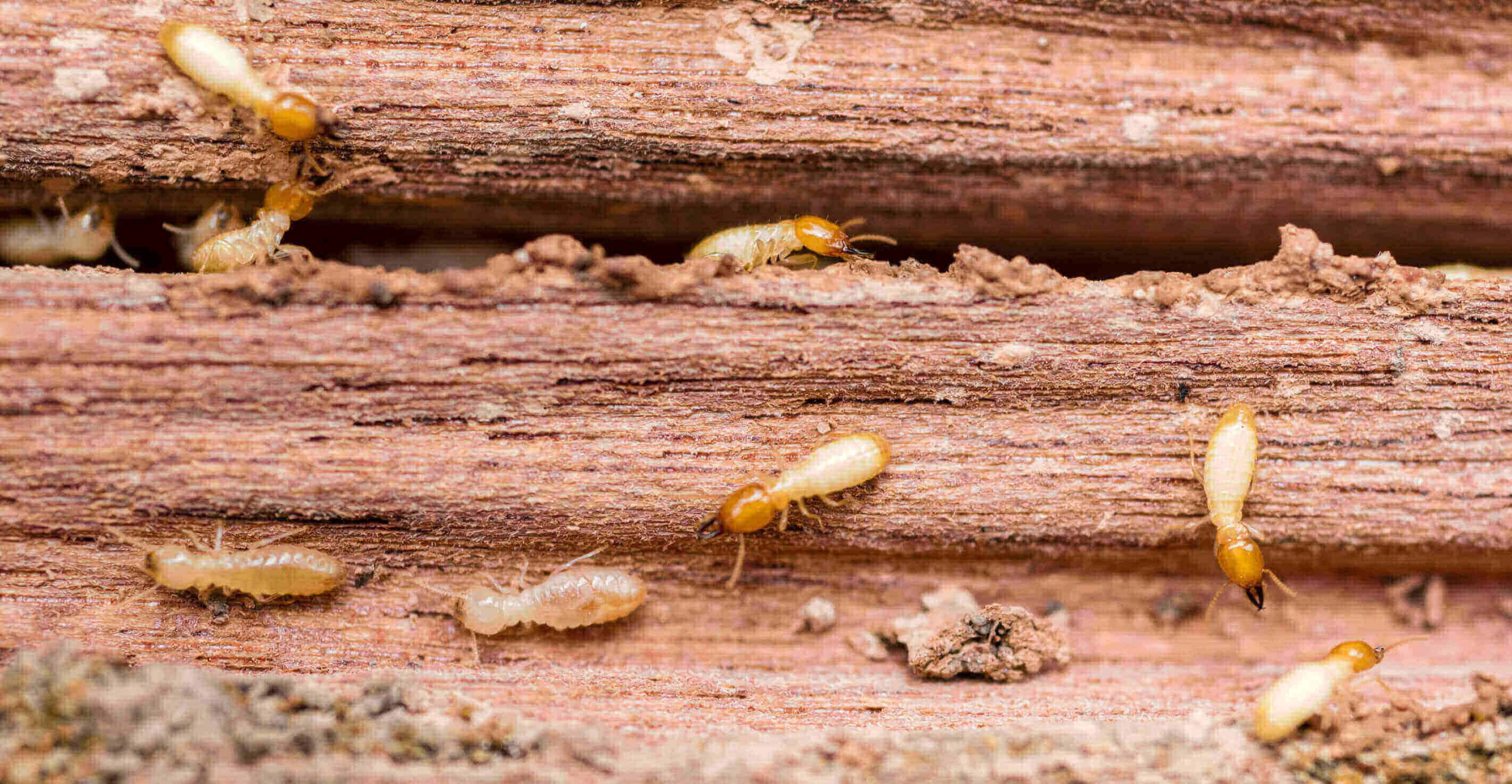
Termites are divided into three primary groups and these groups are determined by the species’ diet and behavior.
| Termite Group | Diet | Behavior |
|---|---|---|
| Subterranean | Wood, cellulose | Live in colonies in the ground |
| Drywood | Wood | Live in colonies in wood |
| Formosan | Wood, cellulose | Live in colonies in the ground and in wood |
Subterranean termites are the most common species of termite in the United States. They live in colonies in the ground and feed on wood and cellulose material. The colonies of subterranean termites can range in size from hundreds to millions of individuals.
Drywood termites are found in warmer climates and feed exclusively on wood. They live in colonies within the wood they are consuming, so they can be difficult to detect.
Formosan termites are an invasive species of termite that originated in China. They live in colonies in the ground and in wood and feed on both wood and cellulose material. They are highly destructive and can cause significant damage to structures in a short amount of time.
Common Causes of Termites in Homes
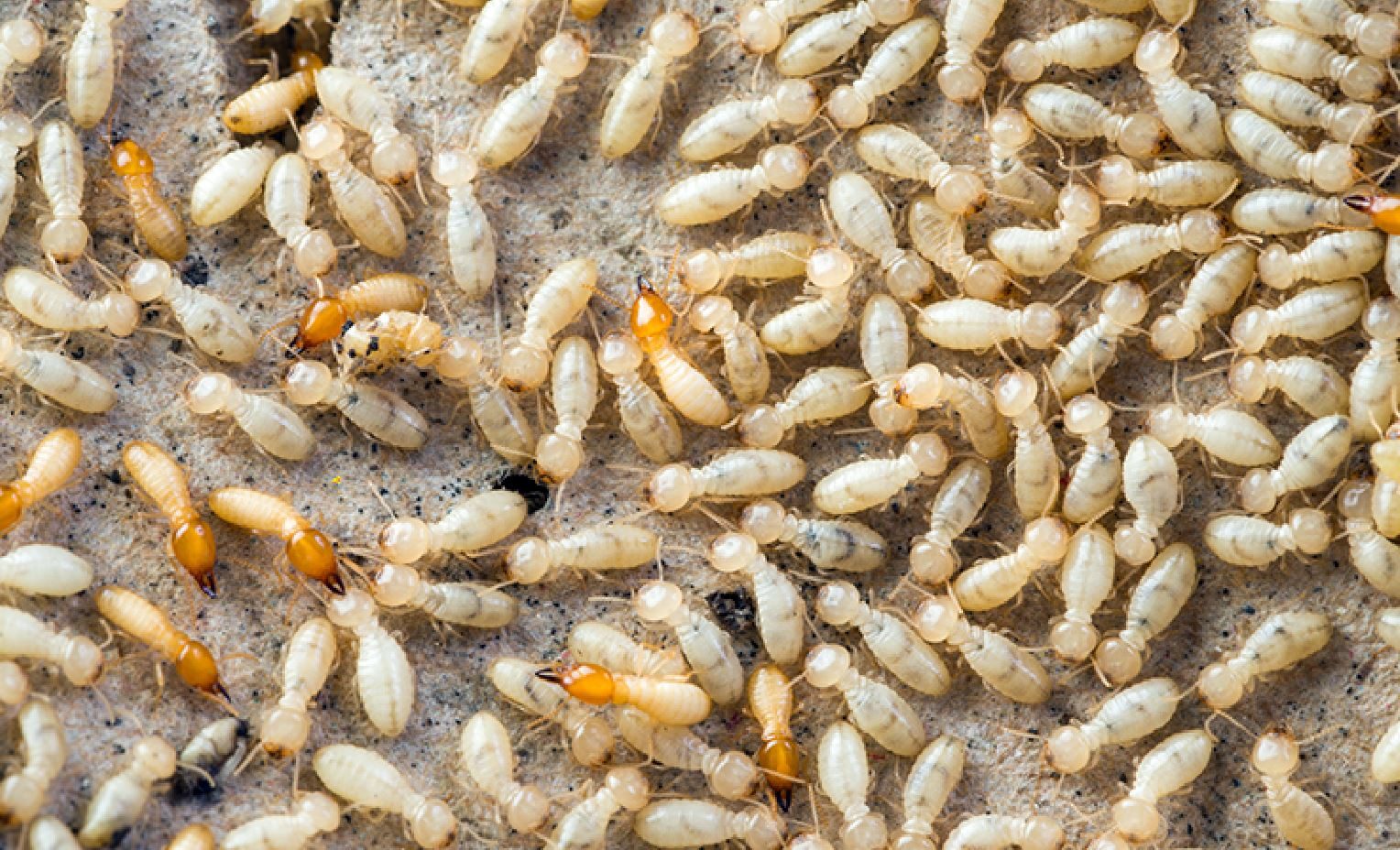
Termites are small, wood-eating insects that can cause major damage to buildings. They often go undetected until the damage is already done. While there are some ways to prevent termites from entering your home, it’s important to understand what causes them in the first place. Here are some common causes of termites in homes:
• Moisture: Termites are attracted to moisture and damp areas, so if your home has high humidity levels or any plumbing leaks, this can attract termites.
• Wood: Termites are attracted to wood, so if your home has any wood structures, such as decks, sheds, or fences, these can attract termites.
• Cracks and Gaps: Cracks and gaps in foundations, walls, and floors can provide an entry point for termites.
• Trees and Plants: Trees and plants can provide shelter and food for termites, so if your home is close to a wooded area or has any plants or trees in the yard, they can be an attractive home for termites.
• Poor Ventilation: Poor ventilation and air circulation can create the perfect environment for termites to thrive in.
• Woodpiles: Stacks of wood, such as firewood, can provide a great place for termites to breed and feed.
• Debris: Debris, such as leaves, twigs, and other organic matter, can attract termites.
By understanding common causes of termites in homes, you can take steps to prevent them from entering your home and causing damage.
Identifying the Signs of Termites
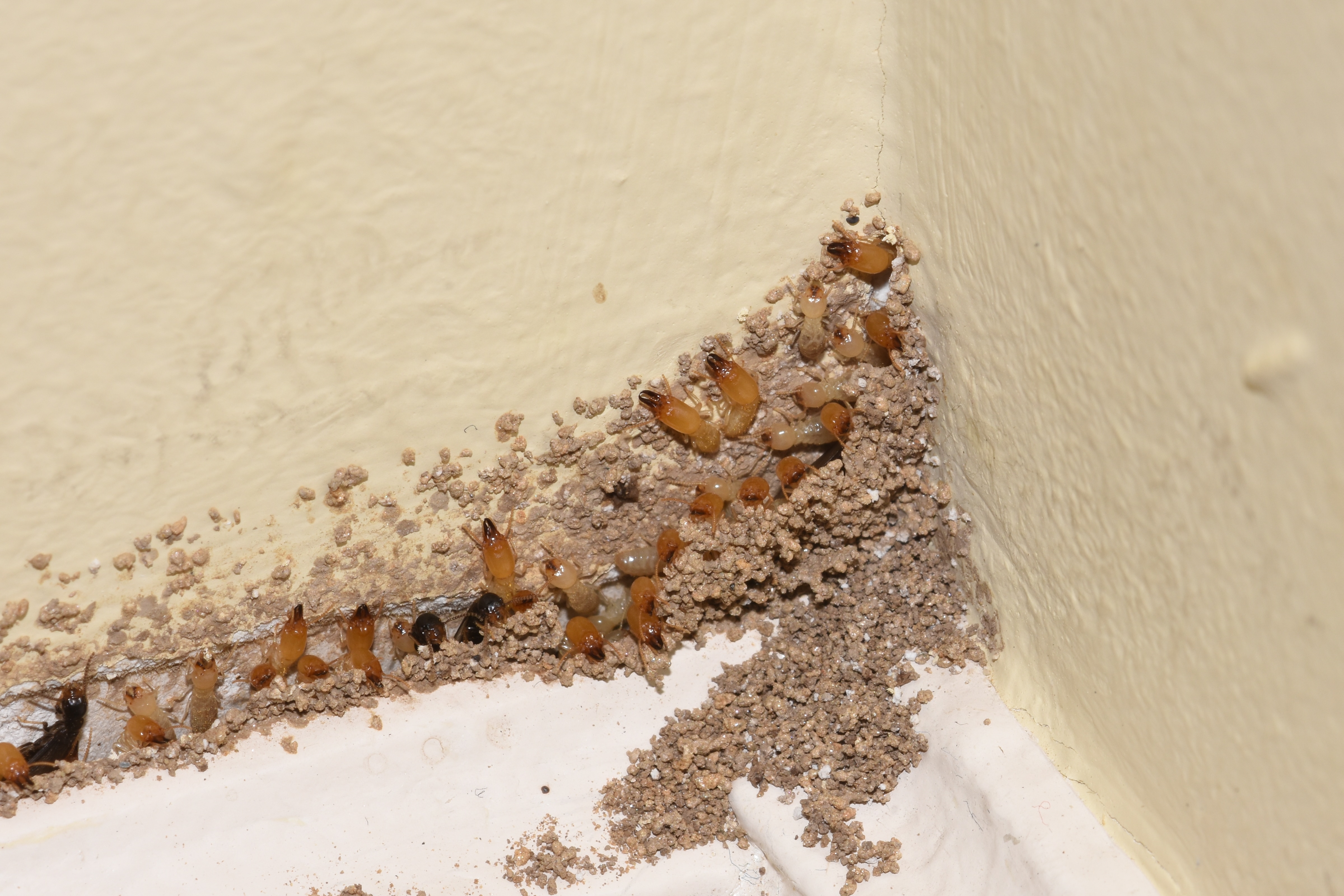
The presence of termites in the house can cause significant damage and should be addressed quickly. It is important to identify the signs of termites as early as possible before the infestation gets out of control.
Termite droppings, also known as frass, is a tell-tale sign of an infestation. These droppings are small and oval shaped and are typically found near the entry points of the termites.
Another indication of a possible infestation is the presence of mud tubes. These tubes are built by termites and are used to travel back and forth between the wood and the ground. The tubes can be found along walls, foundations and other wooden structures.
Termites also leave behind signs of damage, such as hollowed out wood, bubbling paint and cracked or discolored drywall. In extreme cases, termites can cause structural damage to the home.
If you suspect a termite infestation, it is important to contact a professional pest control service as soon as possible. The pest control service will be able to identify the species of termites, assess the extent of the infestation and provide advice on the best course of action.
Prevention Techniques

- Keep wood and mulch away from the foundation of your house
- Check for any cracks or holes in the foundation or walls of your house and seal them
- Repair any leaks or other water damage
- Remove any damp or decaying wood from your property
- Install a physical barrier between the soil and your foundation
- Ventilate crawl spaces and attics
- Inspect your house regularly for signs of termites
- Use borates on wood and soil near your house
- Apply insecticides to create a barrier around your house
- Reduce humidity levels in your home
Prevention Strategies for Landlords and Tenants
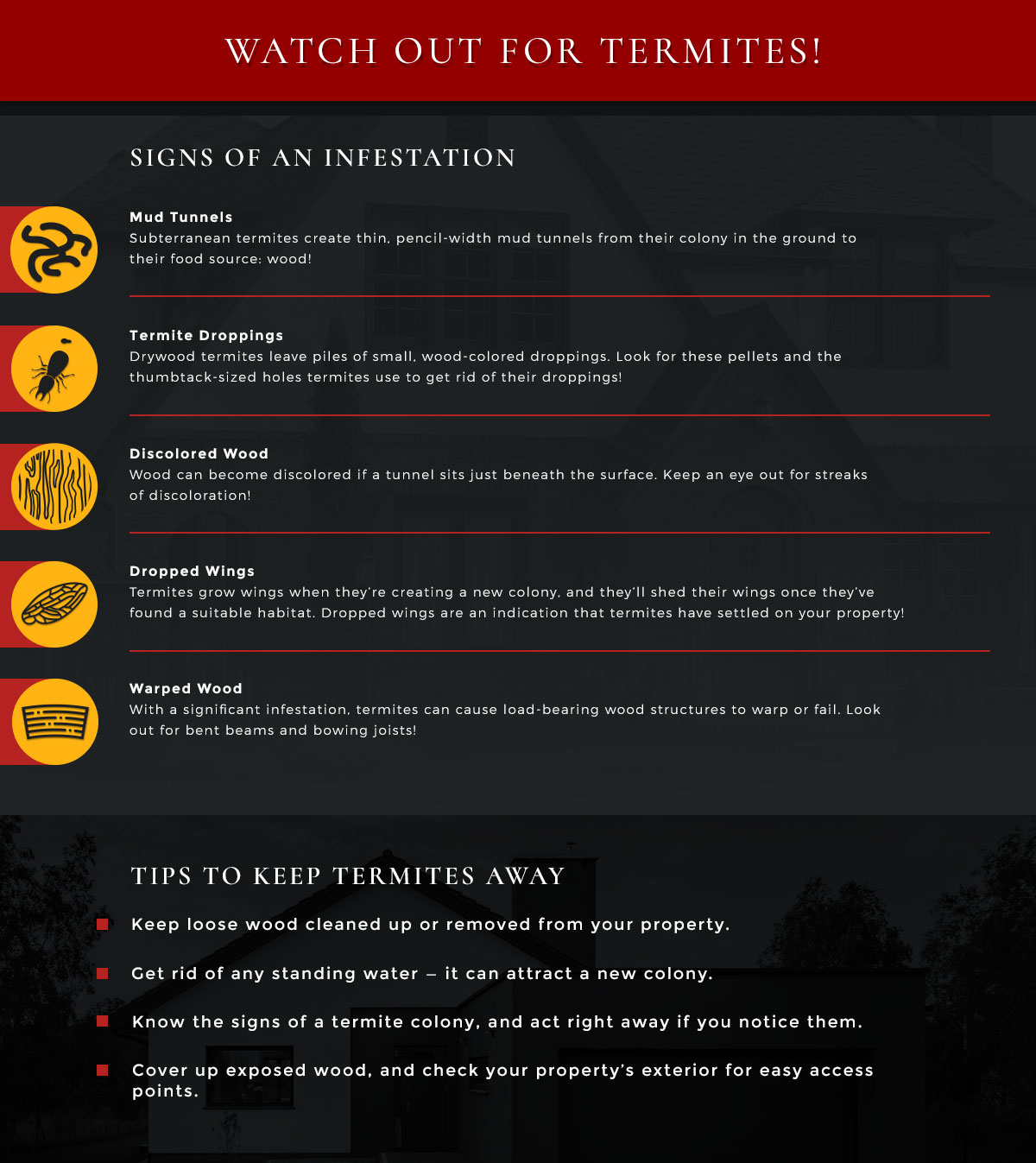
- Inspect the property regularly for signs of termites or damage caused by them.
- Ensure that any wooden structure is adequately treated with a termite-resistant coating.
- Regularly remove any debris, including wood, cardboard and paper, from around the property.
- Seal any cracks and crevices in the walls, floors and ceilings.
- Install vents and window screens to keep out flying termites.
- Keep the property well ventilated.
- Keep gutters and downspouts clear of debris.
- Ensure trees, shrubs and other vegetation are well-maintained and away from the property.
- Make sure all wood debris is disposed of properly.
- Have a professional pest control operator conduct regular inspections and treatments.
Cost of Termites for Homeowners
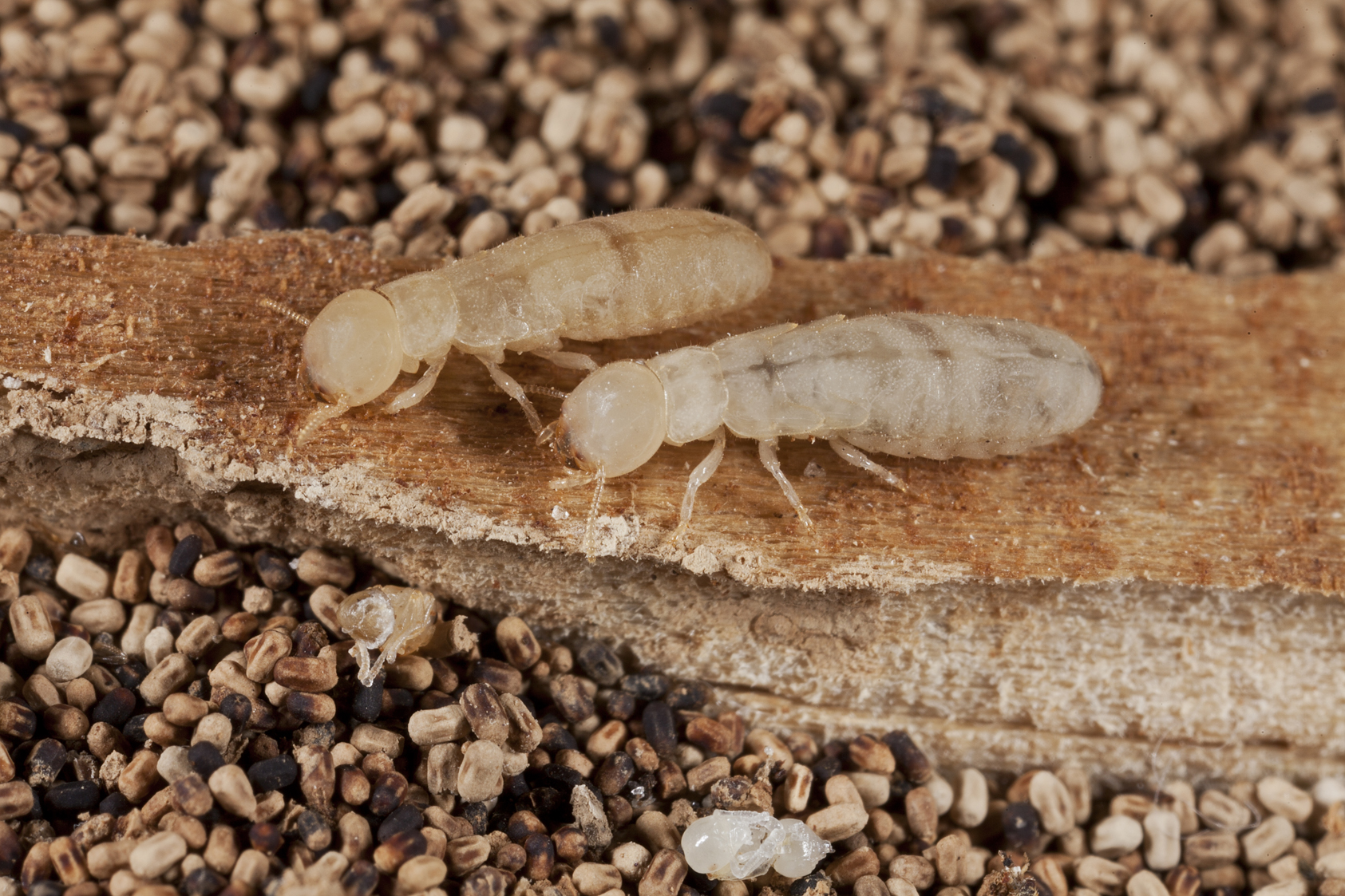
Termites can cause extensive damage to a home and can cost homeowners thousands of dollars in repairs. The cost of treating and preventing termites varies depending on the size of the home and the extent of the infestation.
Treatment Costs
The cost of treating a termite infestation can vary depending on the size of the home and the extent of the infestation. On average, a professional treatment for a single-family home of 2,000 square feet can cost between $1000 and $3000. For larger homes, the cost can be higher, ranging from $2,500 to $5000. Treatment can also include repair costs for any damage that has already been done.
Prevention Costs
Preventing termites from infesting a home can help reduce the risk of costly damage. The cost of prevention can vary greatly depending on the size of the home and the type of prevention method used. For example, the installation of chemical barriers can cost between $1000 and $3000, while the installation of physical barriers can cost between $2000 and $4000.
Cost of DIY Treatments
Some homeowners opt for DIY treatments for termites. DIY treatments can cost significantly less than professional treatments, but there is a greater risk of an infestation not being completely eradicated. DIY treatments typically cost between $50 and $200, depending on the product used.
Table Summary
| Treatment | Cost |
|---|---|
| Professional Treatment (2,000 sq. ft. home) | $1,000 – $3,000 |
| Chemical Barrier | $1,000 – $3,000 |
| Physical Barrier | $2,000 – $4,000 |
| DIY Treatment | $50 – $200 |
The cost of treating and preventing termites can be expensive, but it is important to remember that the cost of repairs from an infestation can be even higher. It is best to take preventive measures to ensure that termites do not invade your home.
DIY Treatment for Termites
| Treatment Method | Description |
|---|---|
| Bait Stations | Bait stations are placed near the infested area and are used to attract the termites. The bait contains an insecticide that will kill the termites. |
| Foam Spray | Foam spray is a type of insecticide that is applied directly to the infested area. It kills the termites on contact and also helps to prevent them from returning. |
| Borates | Borates are natural minerals that are used to kill termites. They are applied to the infested area and will kill the termites on contact. They also help to prevent future infestations. |
| Heat Treatment | Heat treatment involves using high temperatures to kill the termites. This is done by raising the temperature of the infested area to a level that is too hot for the termites to survive. |
| Vacuum Treatment | Vacuum treatment is used to remove the termites from the infested area. This is done by using a vacuum cleaner to suck up the termites and their eggs. |
Professional Treatment for Termites
| Treatment | Description | Cost |
|---|---|---|
| Baiting System | The baiting system is a popular and effective method to treat termite infestations. It involves the installation of bait stations around the perimeter of the home that are filled with a cellulose-based bait material. The bait material is then eaten by the termites and passed back to the nest, eventually killing the entire colony. | $1,000 – $3,000 |
| Liquid Termiticide | Liquid termiticides are chemical-based treatments that are injected into the soil around the perimeter of the home. The chemicals create a barrier that prevents termites from entering the home and are effective at killing any termites that come in contact with it. | $1,500 – $3,000 |
| Fumigation | Fumigation is the most comprehensive type of termite treatment. This method involves the use of a fumigant gas that is injected into the home and penetrates into the wood and other material where termites may be living. The gas then kills the termites and their eggs. | $2,000 – $4,000 |
Professional treatments for termites involve the use of baiting systems, liquid termiticides, and fumigation. Baiting systems involve the installation of bait stations around the perimeter of the home that are filled with a cellulose-based bait material. Liquid termiticides are chemical-based treatments that are injected into the soil around the perimeter of the home. Fumigation involves the use of a fumigant gas that is injected into the home and penetrates into the wood and other material where termites may be living. The cost of professional treatments varies, but generally range from $1,000 – $4,000.
Frequently Asked Questions
How do I know if I have a termite infestation in my house?
Signs of a termite infestation include piles of discarded wings, small flying insects, mud tubes along walls, and wood that sounds hollow when tapped. Other signs may include cracked or bubbling paint, small holes in wood, and swollen floors and ceilings. If any of these signs are present, it is best to contact a professional for an inspection.
What are some signs I should look out for to identify a termite infestation in my house?
Termites can cause huge amounts of damage to the wooden structures of your home, so it’s important to be aware of the signs of a termite infestation. Look out for swarms of flying ants, mud tubes on the walls, hollow-sounding wood, darkening or blistering of wood, and piles of insect wings. Termites also leave behind a sawdust-like material, which is a sign of wood damage. If you notice any of these signs, contact a professional pest control service as soon as possible.
What kind of damage can termites cause to my house?
Termites cause structural damage to wood, which can weaken the foundation, support beams, flooring, and walls. In the worst cases, they can cause the collapse of the entire structure. Termites also feed on paper, cardboard, plastic, and other items that may be lying around your home. In addition, they can damage insulation, window frames, and other building materials.
What are the most effective ways to protect my house from termites?
To protect your home from termites, create a barrier between the soil and wooden structures. Ensure that the foundation of your home has a chemical or physical barrier installed, such as termite shields. Regularly inspect your home for signs of termite activity, such as discarded wings, mud tubes and damaged wood. Remove any sources of moisture, such as leaking pipes or clogged gutters. Keep firewood, mulch and other organic materials away from the house. Prune trees and shrubs away from the home and ensure that there is good ventilation in the crawlspace. Finally, have a professional pest control service inspect and treat your home for termites on a regular basis.
What can I do to get rid of termites in my house?
The best way to get rid of termites is to hire a professional pest control company to treat your home with a baiting system or liquid pesticide. Baiting systems are considered the most effective method of termite control, as they target termite colonies directly. Liquid pesticide treatments are also effective, but may require multiple treatments to completely eliminate the termite population in your home. Additionally, you can use physical barriers such as foam sealants and metal mesh to keep termites away from your home.
Conclusion
Termites can cause extensive damage to property if left unchecked. To protect your home from infestation, you should regularly inspect for signs of termite activity, such as mud tubes, sawdust, and discarded wings. You should also maintain good drainage and ventilation to discourage termite activity. Also, consider treating your home with insecticides or baiting systems to prevent termite infestation.

